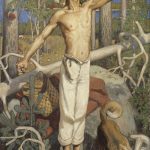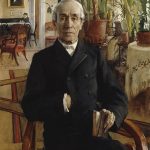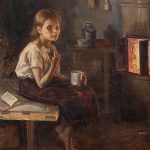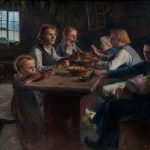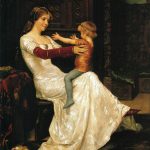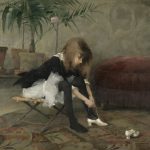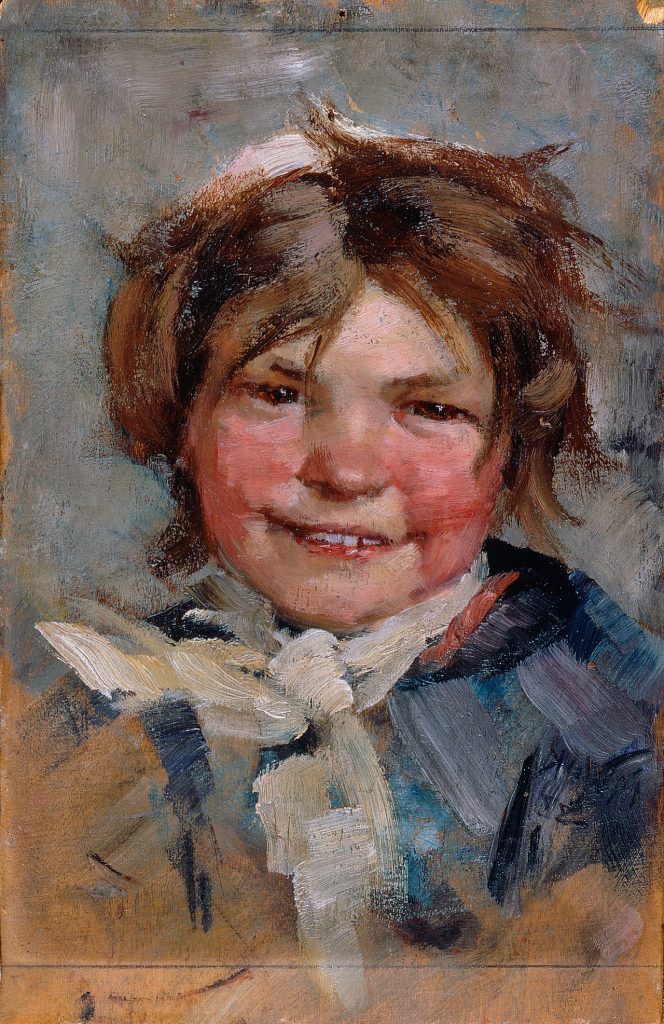
Maria Wiik (20 February 1853 – 19 November 1928) was a Finnish painter known for her contributions to the visual arts in the late 19th and early 20th centuries. She is particularly celebrated for her portraiture and genre paintings, which often depicted scenes from everyday life in Finland. Here are some key points about Maria Wiik and her life and work:
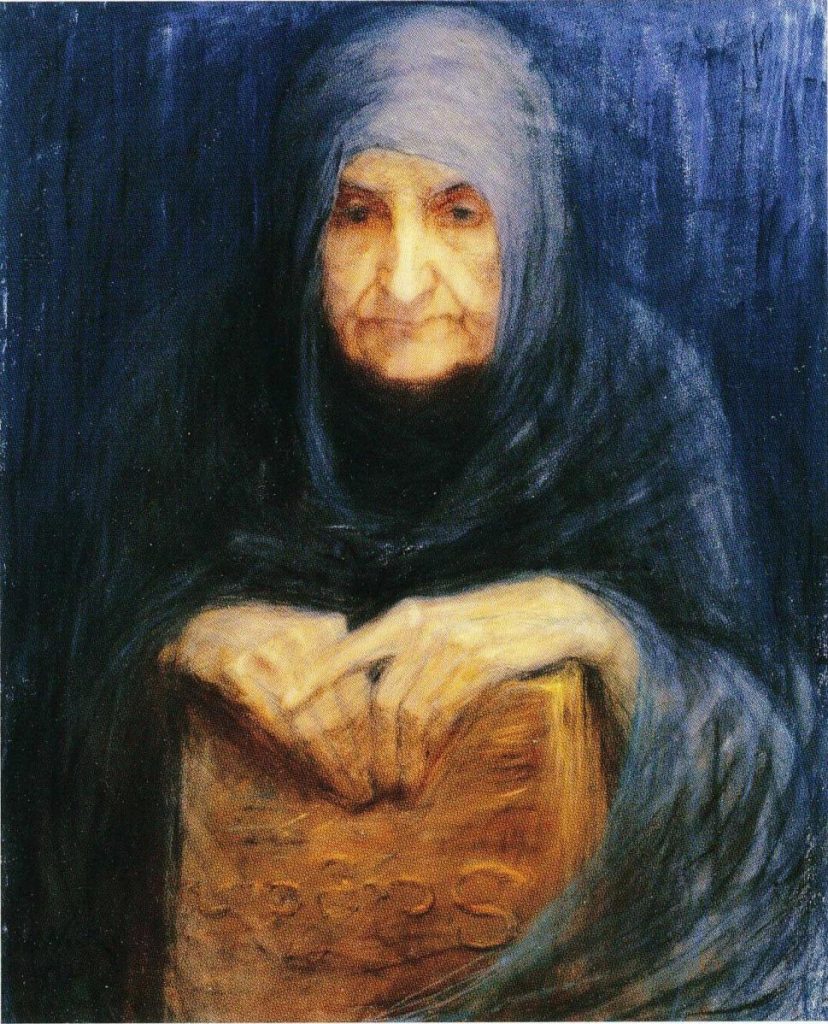
- Early Life and Education: Maria Wiik was born in the town of Vammala in what is now Finland. She showed an early interest in art and began studying painting at the Finnish Art Society’s Drawing School in Helsinki. She also received instruction from notable Finnish artists, including Albert Edelfelt and Helene Schjerfbeck.
- Career and Style: Wiik’s early works were influenced by the realistic and naturalist styles of her time. She often painted scenes of ordinary life in Finland, capturing the nuances of rural and urban existence. Her style evolved over the years, incorporating elements of Impressionism and Symbolism.
- Portraiture: Maria Wiik gained recognition for her portraits, which were noted for their sensitivity and psychological depth. Her portraits of children and women, in particular, are considered some of her finest works.
- “The Family Heirloom”: One of Wiik’s most famous paintings is “The Family Heirloom” (1881), which depicts a young girl examining a valuable piece of family jewelry. This work is often praised for its detail and emotive quality.
- Symbolism: In the later part of her career, Wiik embraced Symbolism, a movement that sought to convey abstract and emotional ideas through art. She created several Symbolist works that explored themes of spirituality and mysticism.
- Recognition and Exhibitions: Maria Wiik’s art was well-received in Finland, and she exhibited her works in various exhibitions, including the Paris Salon. She also gained recognition internationally and was awarded medals for her paintings.
- Teaching: In addition to her painting career, Wiik was involved in teaching art. She taught at the Finnish Art Society’s Drawing School and had a significant impact on the next generation of Finnish artists.
- Later Life: Maria Wiik continued to paint and exhibit her work throughout her life. She remained active in the Finnish art community and was involved in various art organizations.
- Legacy: Maria Wiik’s contributions to Finnish art are highly regarded, and her works are held in the collections of several museums and institutions in Finland. Her portraits and genre scenes continue to be appreciated for their technical skill and insight into Finnish society during her lifetime.
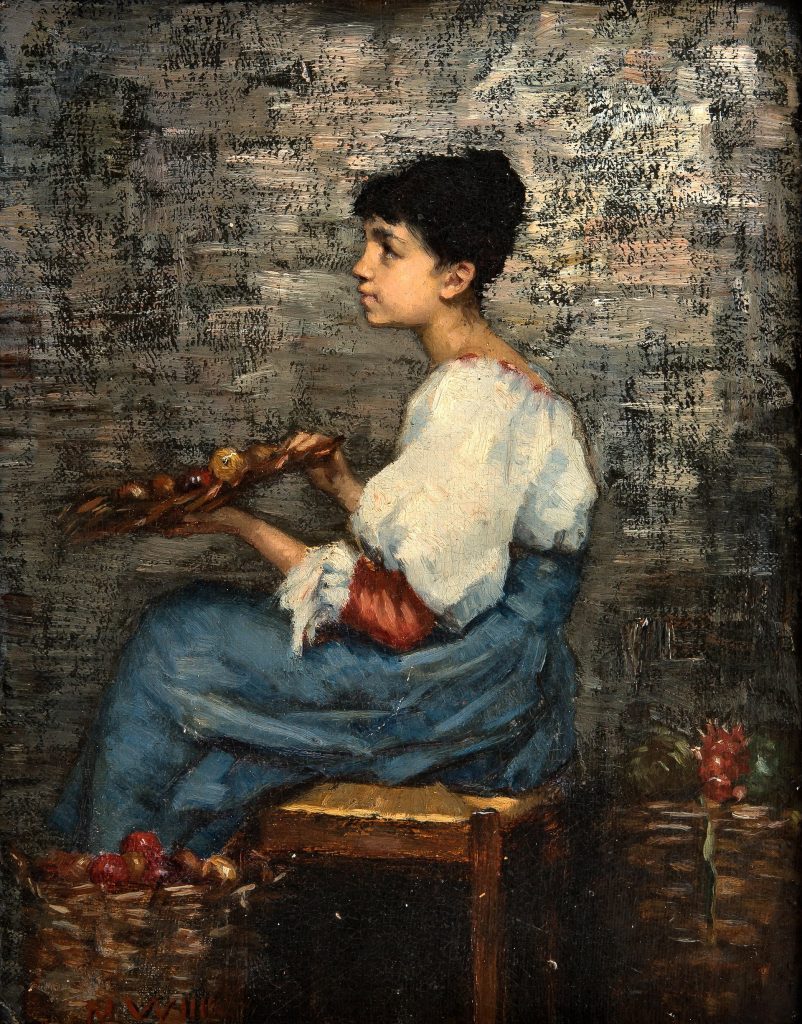
Maria Wiik’s art provides a valuable glimpse into the culture and daily life of Finland in the late 19th and early 20th centuries. Her ability to capture the emotions and character of her subjects, especially women and children, remains a testament to her skill as a painter.


